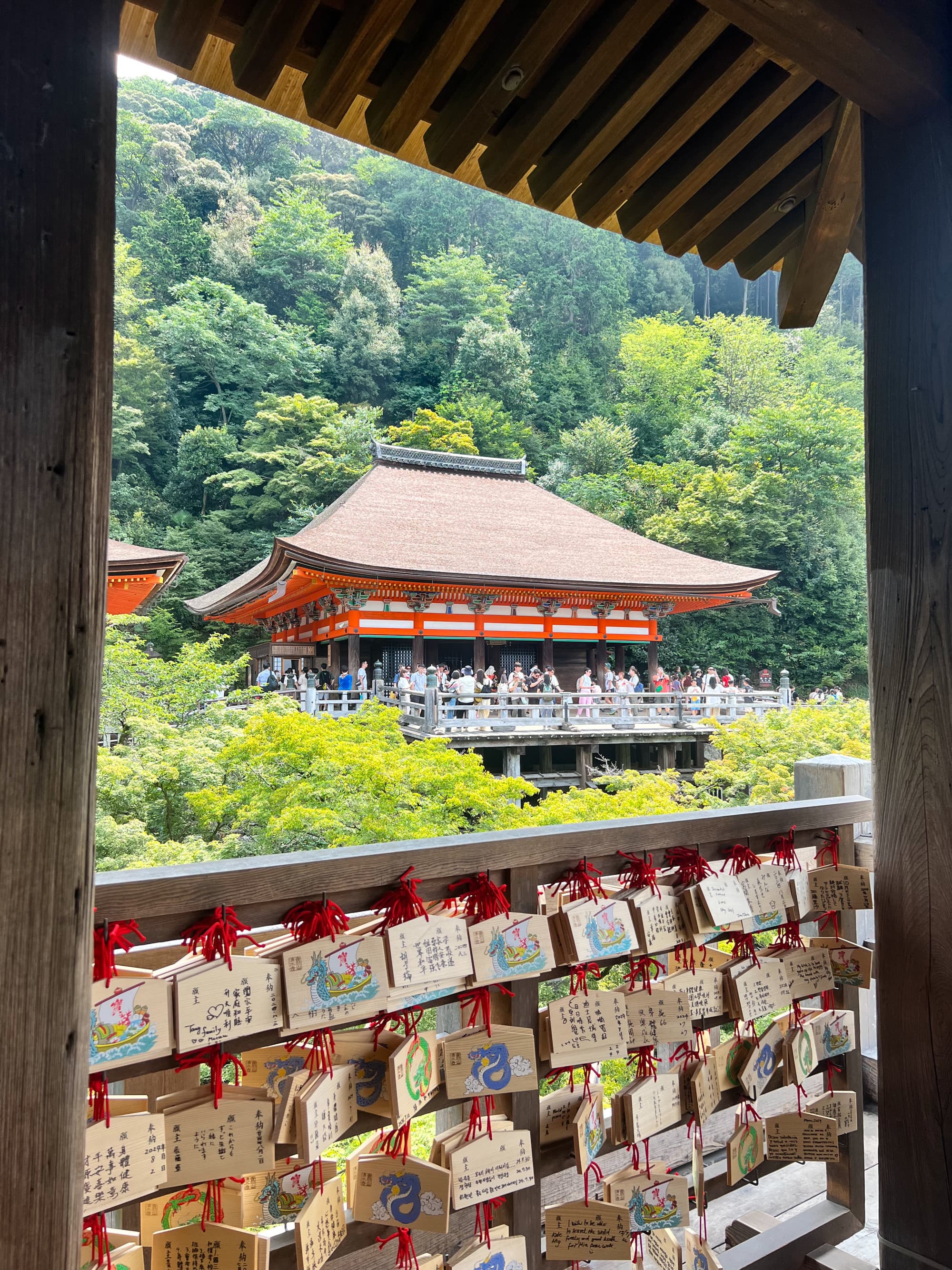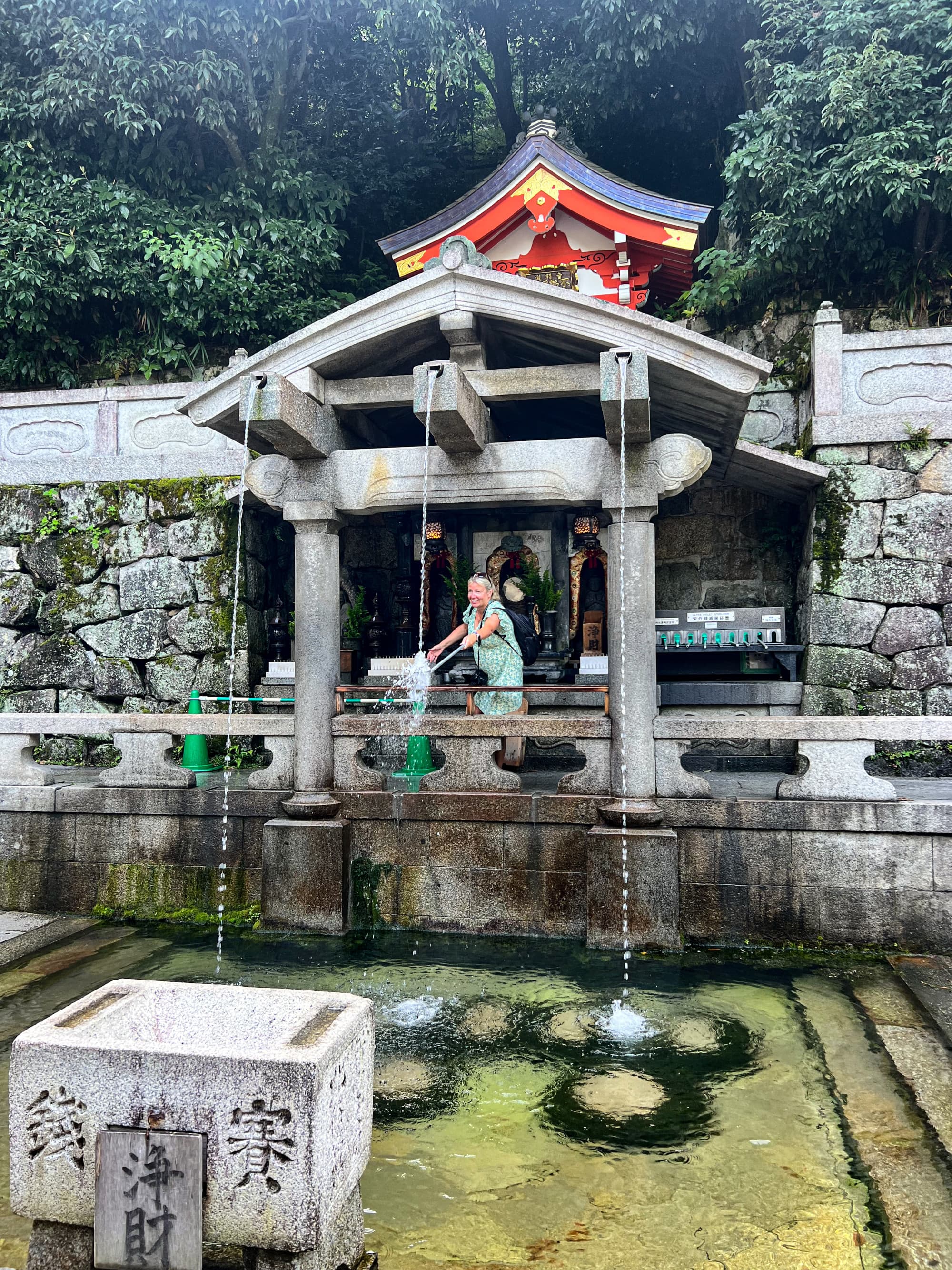
Curator’s statement
Kyoto captured my heart in August 2024 with its unique blend of old-world charm and natural beauty. Wandering through its quiet temples and vibrant gardens felt like stepping into a living storybook. There was something magical about losing myself in the narrow, lantern-lit streets and discovering hidden gems that seemed to whisper secrets of a bygone era. For anyone who loves diving into rich cultural experiences and soaking up stunning landscapes, Kyoto is truly unforgettable.
The Fora Difference
Book with Joelle to access exclusive perks and experiences on your trip.
Killer perks
Free upgrades, spa credits and more—we got you
Personalized recs
Customized travel planning for your style
Insider knowledge
Expert advice from people who’ve actually been there
Where to stay
Welcome to Kyoto, where the past and present dance together in a harmonious blend of ancient tradition and modern vibrancy. This city is a living tapestry of Shinto shrines, Buddhist temples and picturesque old streets, offering a glimpse into Japan's rich cultural heritage.
Kyoto is home to over 400 Shinto shrines, each with its own unique charm. The most iconic of these is the Fushimi Inari Taisha Shrine, famous for its 1,000 vermilion torii gates that create a stunning, almost otherworldly corridor. These gates, which have been donated by patrons, are inscribed with their names, adding a personal touch to the shrine's majesty. While the base of Fushimi Inari can get quite crowded with tourists snapping selfies, the real magic happens when you ascend to the top. It’s a bit of a workout, especially on a hot summer evening, but the panoramic views and lighter crowds make it all worthwhile.




Yet, despite Fushimi Inari’s fame, my personal favorite is the Buddhist Temple Kiyomizu-dera. Founded in 780, this temple is nestled in a lush forest, offering a refreshing escape from the bustle of Kyoto's one-and-a-half million residents. Unlike Shinto shrines, Buddhist temples have set visiting hours and are self-sustained through entrance fees rather than donations. I enjoyed Kiyomizu-dera so much that I visited it three times. For the best experience, try to arrive right when it opens — you’ll have the serene grounds mostly to yourself, which is a rare treat in such a popular destination.

One of the highlights of Kiyomizu-dera is the Otowa Waterfall at its base. This charming spot is not only picturesque but also steeped in tradition. The waterfall splits into three streams, and visitors use long cups to drink from each one, with each stream representing a different blessing: longevity, academic success or a happy love life. I chose the middle stream, so here's hoping my academic journey is blessed.




Another gem I discovered was Otagi Nenbutsu-ji Temple, located on the outskirts of Kyoto about a 30-minute drive from Nijo Castle. This temple is home to around 1,200 quirky and whimsical Rakan statues, each representing the disciples of the Buddha. These statues, crafted by various artisans, are unique and full of character. Visiting Otagi Nenbutsu-ji felt like stepping into a sculptural wonderland, and the lack of crowds made it a peaceful retreat from more tourist-heavy spots.

For those seeking hidden treasures, skip the crowded Arashiyama Bamboo Forest and head to Shimokawaracho instead. Near the parking lot for the Ryōzen Kannon memorial, you’ll find a delightful bamboo grove that’s often overlooked. Look out for the towering Buddha statue in the distance — it's a tranquil escape from the usual tourist spots.
Strolling through Kyoto's streets, particularly the enchanting district of Gion, feels like stepping into a living postcard. Locals and visitors alike don kimonos, which I always thought were reserved for festivals. To my surprise, kimonos are a daily attire for many. Despite the summer heat, the grace with which people wear them is truly admirable.
One pleasant surprise was the abundance of kimono rental shops. Initially, I worried that as a blonde-haired, blue-eyed visitor, donning a kimono might seem like cultural appropriation. Instead, I found that wearing a kimono is warmly encouraged as a way to engage with Kyoto’s traditions. This open embrace of cultural experiences is one of the many joys of travel.




Gion, with its historic buildings and the stunning Hōkan-ji pagoda, is undeniably magical. However, it’s also a popular spot, and by 10 am, it’s teeming with visitors. For a more tranquil experience, rise early. I ventured out just after six am and, although there were other photographers around, the early morning serenity allowed me to fully appreciate the charm of Gion.
Kyoto is waiting to reveal its timeless treasures to you — are you ready to explore them?
Need to know
I recommend getting an early start. It is no secret that Kyoto is a must-see destination. The streets are congested with visitors before 10 am.
This trip report is part of our ongoing series on travel to Kyoto. In need of further inspiration? Check out Joelle Massari's guide, Takayama: Japan's Hidden Gem Still Awaiting Its Instagram Moment.
